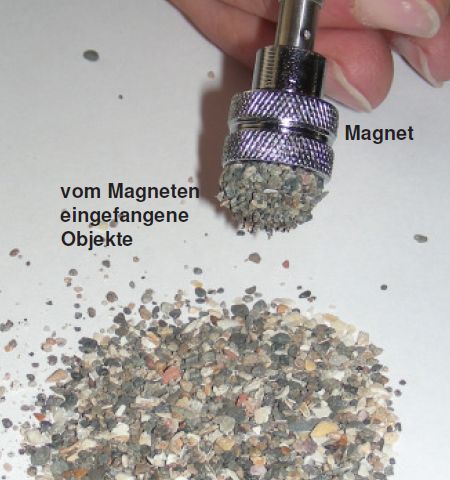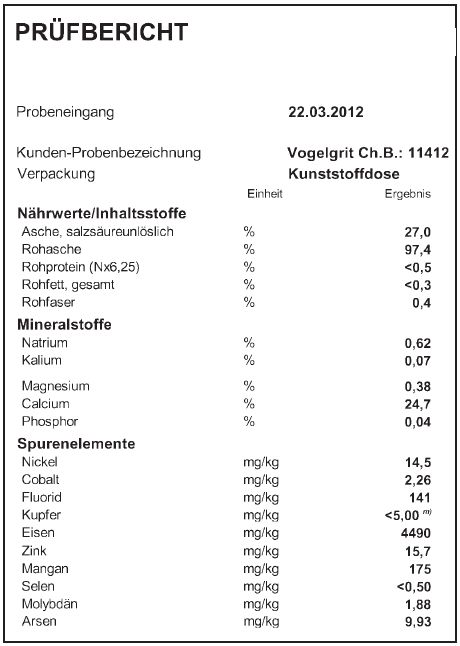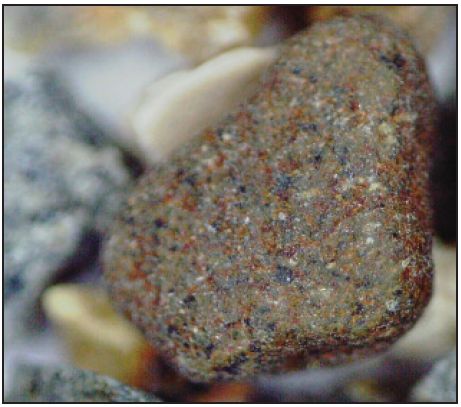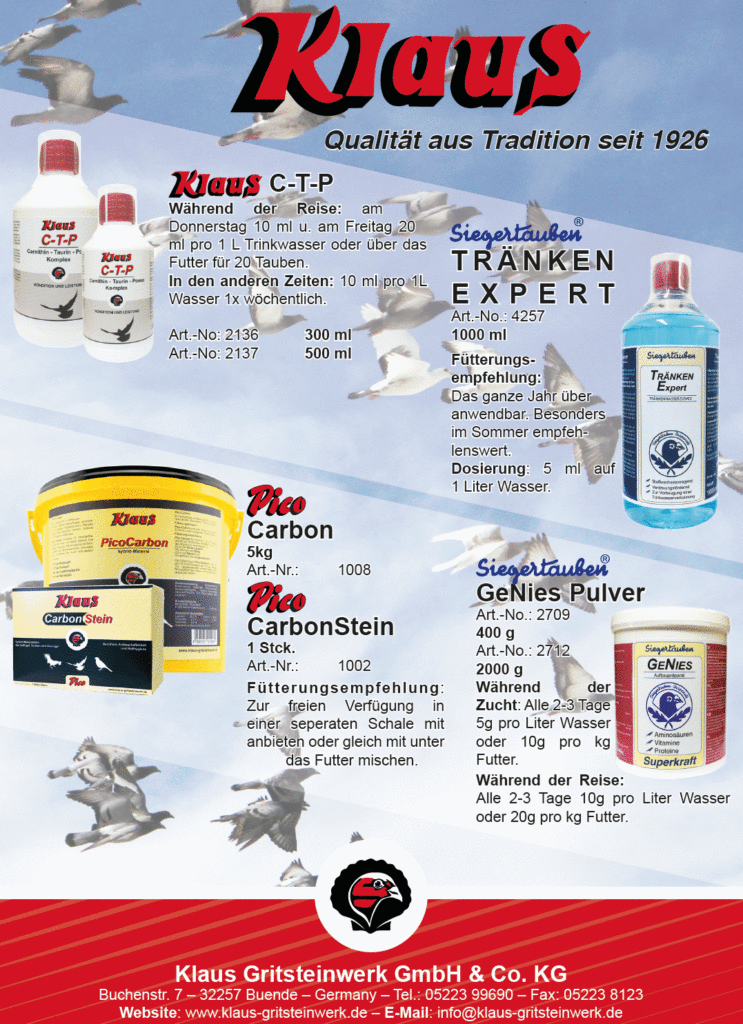About occurrence and significance of magnetic sediments in bird-grit & pigeon grit – Article by Peter Klaus…
Some time ago I received an urgent request from a bird lover regarding pathogenic impurities in bird grit. The inquiring bird keeper had examined his grit with a magnet and was shocked to find that different gray particles were stuck to the magnet. In fact, numerous reports of such experiments can be found on the Internet. A very extreme statement was something like this: “Some time ago I received an urgent request from a bird lover regarding pathogenic impurities in bird grit. The inquiring bird keeper had examined his grit with a magnet and was shocked to find that different gray particles were stuck to the magnet. In fact, numerous reports of such experiments can be found on the Internet. A very extreme statement was something like this:” We take our customers' questions seriously and deal with them, that goes without saying. That is why I want to provide reasoned information with this report. As carrier pigeon breeders, we know that sand consists largely of SiO2 and cannot be utilized by the animal organism. Sand has no nutritional purpose as animal feed. Replacing minerals and trace elements with sand will make the animals ill in the long run. Of course, carrier pigeon breeders also know that a supply of minerals is necessary so that the birds are healthy, resilient and ready to perform. Grit from sea deposits is one of the carriers of the necessary minerals (especially calcium) and trace elements (iron, cobalt, manganese, zinc, etc.).

Composition
klaus grit 1
All four substances were examined for magnetic components. We found magnetic components in the three sedimented feedstocks. Not in the quartz stones used (stomach stones). We have isolated and examined the components. These are the natural deposits from the sediments of the mussel and oyster shell beds. There are no foreign metal entries in the grit and no unnatural, sharp-edged metal parts can be found. The components found are the carriers of the trace elements in the grit.
The raw materials used have not become conspicuous due to increased risks in the past 30 years. This means that there are no justified complaints or even cases of damage. These raw materials are used in large quantities in poultry farming, pigeon breeding and also for drinking water treatment (drinking water filtration).
The raw materials used have not become conspicuous due to increased risks in the past 30 years. This means that there are no justified complaints or even cases of damage. These raw materials are used in large quantities in poultry farming, pigeon breeding and also for drinking water treatment (drinking water filtration).
According to the information provided by the quarries, oyster shells contain around 37% calcium (our own samples showed, among other things, 37.2%), which corresponds to around 93% calcium carbonate. So the rest consists of about 7% other components. Calcium is one of the bulk elements in mineral feeds and is used, among other things, to build feathers and bones. However, numerous other elements are required for a full supply of minerals and trace elements. Phosphorus, magnesium and sodium as bulk elements. Iron, manganese, zinc, cobalt, selenium, iodine and copper are some of the most important trace elements. Iron and magnetite nutrition is of great importance. Birds in particular need these substances for the formation of hemoglobin in the blood (high efficiency of the metabolism of birds) and for their ability to orient themselves (cf. research results from the University of Frankfurt by Prof. Wilschko and our own investigations into the magnetic field orientation of carrier pigeons). Silicon dioxide in its many forms and chemical variations, e.g. B. as quartz stones (grinding stones for digestion in grain-eating bird species) is also necessary. Without these grinding stones, these bird species starve to death with a full feeder. Since we do not add any artificial trace elements to our product, but the usual grain feed has insufficient amounts of trace elements, the animals are dependent on the naturally occurring trace elements in the bird grit. The components found are therefore in no way harmful to health. On the contrary, they are essential for animal health.
mineralogical origin
mineralogical origin
The sediments in the sea, including beds of mussel shells, oyster shells and coral algae, form over the course of 10 to 100,000 years as life forms die off and then grow again. On and in these banks, in combination with the high proportion of minerals and trace elements in the seawater, the substances crystallize over time and complex accumulations and conglomerations of the substances form. Of course, there are also entries from other chemical, physical and geological processes in the sediments. Incidentally, the above-mentioned components found in the product are almost identical in the three different mining areas in France, Belgium and Holland.
The sediments in the sea, including beds of mussel shells, oyster shells and coral algae, form over the course of 10 to 100,000 years as life forms die off and then grow again. On and in these banks, in combination with the high proportion of minerals and trace elements in the seawater, the substances crystallize over time and complex accumulations and conglomerations of the substances form. Of course, there are also entries from other chemical, physical and geological processes in the sediments. Incidentally, the above-mentioned components found in the product are almost identical in the three different mining areas in France, Belgium and Holland.
The mineral carriers “The mineral carriers” The mineral carriers
Constituents particularly concentrated in the fine fractions. The lighter coarse fractions, consisting mainly of calcium carbonate, contain fewer trace elements. Due to the origin and processing, the raw materials can be used safely. The individual components are stored in silos and processed in certified mixing facilities before being filled into sales packaging. Numerous parameters of the ingredients are subject to natural fluctuations, which is why the values stated on the products regularly deviate from the analysis values. For the interested carrier pigeon fancier here is an excerpt from an investigation protocol:



Peter Klaus – This image has an empty alt attribute. The file name is klaus-peter.jpg
Advertising:





